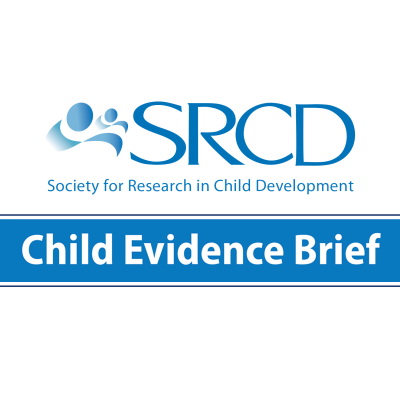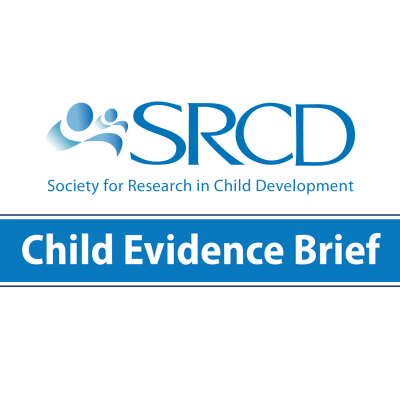Changing Demographics of Dual Language Learners and English Learners: Implications for School Success
Social Policy Report Brief, Volume 31, Issue 2
Why Does this Matter?
An estimated one in five school-age children in the United States speaks a language other than English in the home, and roughly half of these children are emerging bilingual students or English learners (ELs) when they enter school. Effectively educating children who are learning English as their second language is a national challenge with consequences for individuals and society. Despite their potential and the assets they bring to the classroom, many children and adolescents learning English struggle to meet the requirements for academic achievement. A large gap in educational achievement and attainment exists between ELs and their monolingual English peers.
DLL and EL children and youth are a rapidly growing population in U.S. schools; have diverse national, cultural, and linguistic origins; are dispersed throughout the nation; and have distinct socioeconomic situations, immigration experiences, and backgrounds.
Background
- Dual Language Learners (DLLs) are children learning two or more languages simultaneously and children learning a second language while developing their first (home) language.
- ELs are 3- to 21-year-olds enrolled in or preparing to enroll in an elementary or secondary school; not born in the United States or born in the United States whose native language is not English; and whose difficulties in speaking, reading, writing, or understanding English may deny them the ability to meet challenging state academic standards, may limit their achievement in classrooms where instruction is in English, or may limit their opportunity to participate fully in society.
- Although the population of children of immigrants is growing, most EL children were born in the United States and are U.S. citizens.
- DLLs and ELs are demographically diverse, varying in their home language, language abilities, age, race/ethnicity, immigration circumstances, generational status, geographic distribution, academic achievement, parental characteristics and resources, and other demographics.
- As the size of the foreign-born population in the United States has increased, so has the number of countries/regions of origin of immigrants. While 88% of immigrants who arrived in the United States between 1820 and 1920 came from Europe, most immigrants who have arrived since 1965 came from Latin America and Asia.
What the Research Says
- DLLs and ELs have attributes that are important to their schools and communities, including diverse racial and ethnic characteristics, which contribute to diversity in the classroom. In addition, DLLs’ and ELs’ backgrounds give them a unique ability to bridge cultures and languages. Although their home languages generally differ from the predominant language in the classroom, the languages of these students can promote literacy development.
- There is evidence demonstrating that becoming proficient in both English and another language benefits children’s cognitive, social, and emotional development.
- Parents’ financial resources and educational attainment influence their children’s academic achievement. Family structures and household contexts also affect outcomes such as children’s language development.
- While there is wide variation, on average, ELs grow up in more difficult socioeconomic contexts, which can hinder their development.
- On average, parents of DLLs and ELs lack high levels of formal education, though here, too, there is substantial variation. However, these parents tend to express interest in enrolling their children in early education programs, to support their children’s participation in postsecondary schooling, and to send strong messages about the value and importance of education.
Implications for Policy and Practice
To support academic success, we must consider the demographic diversity of DLLs and ELs and the implications of the 2015 Every Student Succeeds Act (ESSA).
- Understanding demographic patterns can help plan for the needs of diverse populations. Districts, states, and federal agencies should collect data by ethnic and language subgroups.
- ESSA replaces limited-English proficient with English learner, which is less suggestive of stereotypes.
- States must articulate rules for how students will progress toward English language proficiency; districts have responsibility for identifying and assessing ELs, and planning for their instruction.
- Concerns have emerged about the possible implications for the legal rights of ELs to an appropriate education because of the greater state flexibility in accountability and greater local flexibility in assessing and reclassifying students, both of which can affect student learning.
- ESSA specifies that plans must ensure coordination and data sharing with early learning programs. Nearly one-third of 4-year-olds, many of whom are DLLs or ELs, participate in state-funded pre-K programs, and approximately one-third of children in Head Start come from homes where a language other than English is spoken. Head Start regulations support the development of bilingualism and biliteracy for DLLs and can be a resource to other early childhood programs.
This brief summarizes a longer Social Policy Report, "Changing Demographics of Dual Language Learners and English Learners: Implications for School Success," by Harriett D. Romo, Professor of Sociology; Director, University of Texas at San Antonio (UTSA) Child & Adolescent Policy Research Institute; Director, UTSA Mexico Center; Kevin J. A. Thomas, Associate Professor of Sociology, Demography, and African Studies, Pennsylvania State University; and Eugene E. Garcia, Professor Emeritus, Arizona State University. The report is drawn from the National Academies of Sciences, Engineering, and Medicine’s 2017 publication, Promoting the Educational Success of Children and Youth Learning English: Promising Futures (the Promising Futures report).


